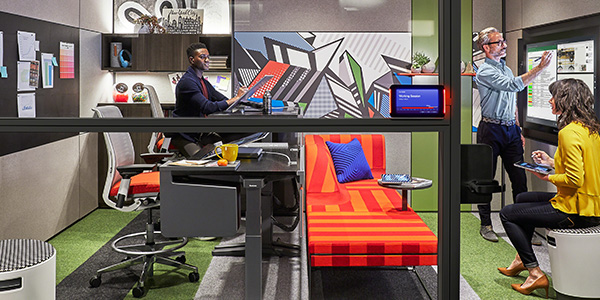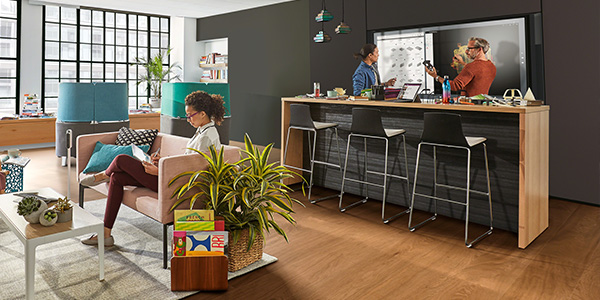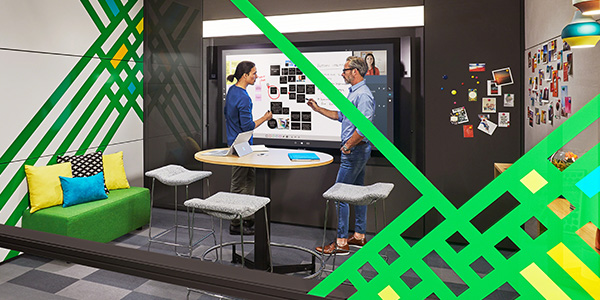Creativity, noun [kree-ey-tiv-i-tee]
- the use of imagination or original ideas to create something; inventiveness
The dictionary defines creativity as having ideas—so contrary to what many may think, it’s not a skill reserved only for designers, artists, marketers, and other artistic types. Research by Steelcase and Microsoft suggests that creativity is not necessarily an innate human ability, but a skill anyone can master that is the result of a purposeful, repetitive process.
Both companies realize that people are asked to “be creative” at work more than ever, yet frequently lack spaces that foster imagination or creativity.
According to Steelcase’s Creativity and the Future of Work Survey:
- 83% of people who say they are asked to be creative at work either weekly or daily.
- 72% of workers who say their future success depends on their ability to be creative.
- 40% of workers say they have a culture that encourages creativity.
- 44% of people who feel like they could be more creative at work if they had a place to work without distractions.
- 25% of people who think they can be creative in places available for group work.
Through their joint research and belief that all people can be creative, Steelcase and Microsoft have announced a new partnership that will help people boost their creativity at work.
RELATED: WHY RESIDENTIAL LOUNGE SPACES IN THE WORKPLACE INSPIRE EMPLOYEES
The Future of Work is Creative
The problems we face at work are more complex and occur in a landscape that changes more quickly than ever. These conditions require people to be able to adapt and learn new skills. People need to be able to think outside the box to continuously generate new ideas and solve problems on the fly—they need to be creative. Because most workplaces weren’t designed for this new collaborative creative mindset, there is a disconnect between the type of work being done and the spaces in which to do it.
The Rhythm of Creativity
Creative work has a cadence in which people and ideas converge and diverge. Workspaces, which includes space and technology, need to support people through all stages of this iterative process.
People need both time alone to focus or rejuvenate and time with small and large groups to brainstorm and cultivate ideas at work. They also require both mobile and integrated cloud-enabled technology that allows ideas to germinate wherever work happens, whether alone or collaboratively.
Steelcase and Microsoft’s Creative Spaces thoughtfully incorporate technology, like the Microsoft Surface Hub, with physical space to form functional and inspiring work environments.
RELATED: 6 KEY FEATURES OF MICROSOFT SURFACE HUB
Creative Tech Spaces

DUO STUDIO
Working in pairs is an essential behavior of creativity. This collaborative space supports a trust relationship in which two people can co-create, while also supporting individual work. It includes a lounge area to invite others in for a quick creative review or to put your feet up and get away without going away.

MAKER COMMONS
Socializing ideas and rapid prototyping are essential parts of creativity. This innovative collaborative space is designed to encourage quick switching between conversation, experimentation and concentration.

IDEATION HUB
This creative meeting space is a high-tech destination that encourages active participation and equal opportunity to contribute as people co-create, refine and share ideas with co-located or distributed teammates.



